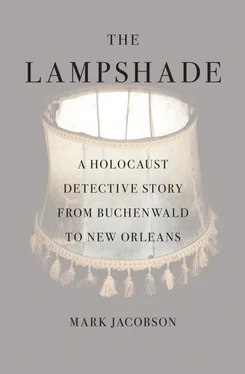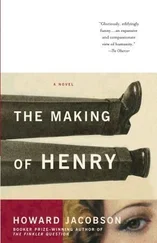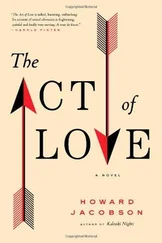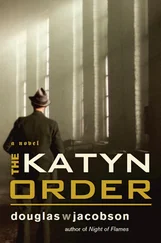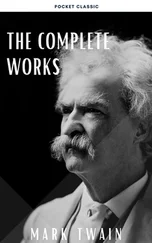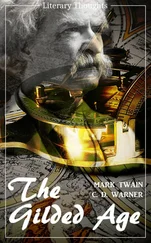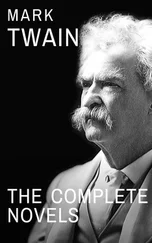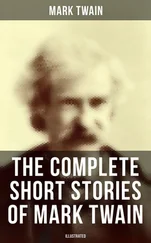“During the GDR it was a tremendous taboo to talk about such things, so the existence of these graves was unknown. There were rumors, but I didn’t believe them. I never imagined the Soviets would do a thing like that.”
Then the historian who dealt with so much death on a daily basis rubbed his brow. He was choked up, close to tears.
“I remember the day I went out there, to where the bodies were. The ground was soft from all the leaves that had fallen from the trees and rotted away. You didn’t have to dig very deep to find what was left. That is when it truly struck me, as I stood in the forest confronting the bones… I was a historian, writing essays, attempting to be authoritative, complete. And right here, no more than a few hundred meters from my office, was this, all this new horrible history. A completely other chapter of cruelty. It was death on top of death, layers of fear and terror.
“I realized I would have to go back to the beginning again. To check everything again. To check and recheck …”
It was past six o’clock and already dark and cold, a German dark and cold, when I look the number 6 bus down the Blood Road away from Buchenwald. I didn’t feel like going back into the hotel, shutting myself away in that little room quite yet, so I walked down Schopenhauerstrasse, past the Bahnhof, to the Internet café near Ernst-Thalmannstrasse. There were a couple of emails waiting for me from Skip Henderson: more photos of houses on top of cars, pleas for more bottles of Manhattan Special espresso soda, and a rant about how the fools in Hazelhurst, Mississippi, still refused to allow the unveiling of the tombstone of Tommy Johnson, avatar of the highways 49 and 61 crossroads, even though Bonnie Raitt, a bona fide white person, had paid for it. Amended to that was further news of the Bus and Skip’s unending quest to find jobs for America’s Least Wanted.
“Sometimes you just have to shake your head,” Skip wrote. “The other day I got the Bus parked out by the mission near St. Charles and this kid, like 17 or something, comes in with ‘fuck bitches’ tattooed on his face. The ‘fuck’ is under one eyebrow and ‘bitches’ under the other. I took one look at him and said, ‘now why you want to make my life harder like that?’ The kid kind of hung his head. I guess he had some second thoughts about the ink. He said that sometimes he’d walk into a store about to ask for a job and wouldn’t even get to open his mouth before they said, ‘no.’ Nothing else. Just no.
“I told him not to worry because I was going to get him a job. I would get him a damn job if it was the last thing I did. ‘This is our city’ I told him, ‘we got to work together on this thing.’ The kid looked at me like I was one more crazy white man, so I tried to break it down for him. I told him to look at himself, with the ‘fuck bitches’ and the white T-shirt, and the Yankee cap on his head. Didn’t that look like someone who needed to have a little money in his pocket? He nodded, sure, everyone needs a little money in their pocket. So I asked him question two: didn’t he look like someone who if he couldn’t get that money by working a nice, safe job would instead be out in the street trying to get that money some other way? He didn’t get that part of it, so I asked him, ‘who would you rather meet in a dark alley, me, or you?’ The kid said, if I put it that way, he could see my point. He didn’t want to rob and steal, he was trying to be a good citizen and build a better New Orleans. So I sent him out on some jobs in the back of the house of some restaurants, where the public doesn’t see you. I got him signed up for cooking school. I told him to forget about the ‘fuck bitches,’ to wear sunglasses.”
That Skip, I thought, he was a great New Orleanian, a great American, always trying to raise the level of hope among the hopeless. His second email, however, was not so uplifting.
Dated a day later it began, “Mark. What the hell are you doing with that lampshade? You have got to get rid of it. Now! It is driving me insane.” Skip detailed another dream he’d had. He’d woken up after the storm to find himself on top of the A-frame roof of a house. “It was just me on top of the roof,” Skip wrote. “I knew the water was coming up. But it wasn’t water. It was lampshades! A sea of lampshades bobbing up and down like shark fins. Circling, closing in! So save me, brother. Save me!”
This email pissed me off. Skip lays the lampshade on me and now I’m supposed to exorcise his guilty dreams? But I knew what he meant. The tide was rising, inside my mind.
Leaving the Internet place, walking around Weimar, I thought Harry Stein was right. When it came to Buchenwald, it was best not to make assumptions. Just because seven thousand bodies were found dumped into a mass grave didn’t mean there weren’t more, maybe thousands more, a hundred feet away. The hand of malevolence was on the place, it could never be redeemed, if that’s what the GDR history makers were trying to do. The truth would never be found here. In the early 1950s, when the Soviets handed the place over to the GDR, the idea was to make Buchenwald into “a place of solemn memory.” To that end, the first thing they did was knock down most of the camp, save the crematorium, the SS barracks, and the pathology blocks. Several years later, many of the old barracks were reconstructed to serve as a set for the state-produced film Naked Among Wolves (Nackt unter Wölfen), the story of how heroic red kapos banded together to hide and protect a young boy smuggled into the camp by his father. Naked Among Wolves was originally written as a novel by former Buchenwald inmate Bruno Apitz. The movie version, mandatory viewing for all citizens, was presented as fact. The use of the rebuilt camp, it was said, added to the story’s “authenticity.”
Weimar itself has been renovated. Left to decay under the GDR, a cash influx of over $700 million had since transformed the town into a classical fantasyland, and it was while strolling from Puschkinstrasse back toward Lisztstrasse behind the Bauhaus Museum that I ran into the Nazis. I couldn’t say I hadn’t been warned. “World Heritage Site” or not, Weimar was a “brown” (as in “Nazi”) town. Always had been, maybe always will be. Neo-Nazis lived in the old East German housing blocks and out in the suburbs, places like Apolda and Magdala. Garages where Trabants, the old East German—made, underpowered, smoke-belching sedans, once sat are often filled with the music of bands like Kommando Freisler, who sing children’s folksongs with lyrics about how “in Belsen” we hang them by the neck, and how Judenhaut is only good for Lampenschirme, fidiralala, fidiralala, fidiralala. There have been hundreds of documented violent incidents involving neo-Nazis and other far-right groups in Thuringia since reunification.
This was what happens, people in Berlin said, when twelve years of National Socialism is immediately followed by forty years of neo-Stalinist clampdown with Stasi microphones under every pillow, when phony socialist Utopia abruptly gives way to grim post-industrial, capitalist reality. In the West they had six decades of post-Nazi Vergangenheitsbewältigung, another of those ingenious German word-phrases meaning roughly “working one’s way through the past.” In the East there was no such process. Here there was only the stolid cult of the New Man and polluted rivers. The past was off-limits, left to fester like a piece of cheese ripening under glass for forty-five years. When the lid came off the Pandoran nastiness, it was best to stand back.
Not that the Nazis—there were four of them, tramping up Lisztstrasse right toward me—were immediately identifiable as such.
Читать дальше
